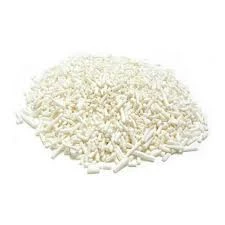
Exploring the Benefits and Uses of 631 Flavor Enhancer in Culinary Creations
The Role of 631 Flavor Enhancer in Modern Cuisine
In the ever-evolving world of culinary arts, flavor enhancement plays a pivotal role in achieving the perfect taste. One such ingredient that has gained significant attention is 631 flavor enhancer, more commonly known as disodium inosinate. This synthetic compound, often used in conjunction with other flavor enhancers like monosodium glutamate (MSG), promises to elevate the taste of a variety of dishes.
What is 631 Flavor Enhancer?
Disodium inosinate, labeled as E631, is a flavor enhancer that naturally occurs in several foods, particularly those rich in protein and certain types of fish. It is derived from inosine monophosphate (IMP), a nucleotide compound that is key in cellular energy transfer. E631 is particularly valued for its ability to provide umami, the fifth taste, which is often described as savory or meaty.
E631 is frequently used in processed foods, snacks, and seasonings to deepen their flavor profile without the need for additional salt. Its effectiveness is typically enhanced when used in combination with other flavor enhancers like MSG or disodium guanylate (E627). This synergistic effect means that even small quantities can significantly boost the overall taste of a dish.
The Benefits of Using 631 Flavor Enhancer
The primary benefit of using E631 in cooking and food processing is its ability to improve taste. By enhancing the natural flavors present in food, it can make meals more appealing to the palate. This is especially crucial in the food industry, where consumer preferences lean toward bold and rich flavors.
631 flavour enhancer

Moreover, 631 flavor enhancer can help reduce the amount of salt needed in dishes. In an age where health consciousness is on the rise, reducing sodium intake is important for many consumers. By using E631, food manufacturers can create products that taste salty and savory while still adhering to health guidelines concerning sodium content.
Additionally, E631 is generally recognized as safe when consumed in moderation. Regulatory agencies such as the Food and Drug Administration (FDA) and the European Food Safety Authority (EFSA) have, over the years, deemed it safe for consumption. This endorsement has made it a common feature in many foods found in grocery stores today.
Controversies and Considerations
Despite its benefits, the use of 631 flavor enhancer is not without controversy. Some individuals may experience sensitivities or allergic reactions to flavor enhancers, leading to concerns about their widespread use in food products. Furthermore, some health advocates argue that the consumption of synthetic additives may lead to long-term health implications that are not yet fully understood.
It is also worth noting that while flavor enhancers can improve taste, they cannot make a poor-quality ingredient palatable. The quality of the base ingredients used in food products remains paramount. As such, chefs and food manufacturers are increasingly focusing on sourcing high-quality, natural ingredients, and using additives like E631 judiciously.
Conclusion
In conclusion, 631 flavor enhancer plays a significant role in modern cuisine, offering a means to boost flavor while potentially reducing sodium levels. While it is generally considered safe and effective, it is essential for consumers to remain informed about the ingredients in their food. As the culinary landscape continues to evolve, understanding the role of flavor enhancers like E631 will remain a crucial aspect of both cooking and food production, helping create delicious and appealing meals for everyone to enjoy.
-
Pure Sodium Dichloroisocyanurate Dihydrate | Powerful DisinfectantNewsAug.29,2025
-
Industrial Chemicals: Quality & Purity for Every IndustryNewsAug.28,2025
-
Nitrile Rubber Honoring Strict Production StandardsNewsAug.22,2025
-
Aspartame Ingredients Honoring Food Safety ValuesNewsAug.22,2025
-
Fertilizer for Balanced Plant NutritionNewsAug.22,2025
-
Cyanide Gold Processing with High Purity AdditivesNewsAug.22,2025
-
Formic Acid in Textile Dyeing ApplicationsNewsAug.22,2025
Hebei Tenger Chemical Technology Co., Ltd. focuses on the chemical industry and is committed to the export service of chemical raw materials.
-

view more DiethanolisopropanolamineIn the ever-growing field of chemical solutions, diethanolisopropanolamine (DEIPA) stands out as a versatile and important compound. Due to its unique chemical structure and properties, DEIPA is of interest to various industries including construction, personal care, and agriculture. -

view more TriisopropanolamineTriisopropanolamine (TIPA) alkanol amine substance, is a kind of alcohol amine compound with amino and alcohol hydroxyl, and because of its molecules contains both amino and hydroxyl. -

view more Tetramethyl Thiuram DisulfideTetramethyl thiuram disulfide, also known as TMTD, is a white to light-yellow powder with a distinct sulfur-like odor. It is soluble in organic solvents such as benzene, acetone, and ethyl acetate, making it highly versatile for use in different formulations. TMTD is known for its excellent vulcanization acceleration properties, which makes it a key ingredient in the production of rubber products. Additionally, it acts as an effective fungicide and bactericide, making it valuable in agricultural applications. Its high purity and stability ensure consistent performance, making it a preferred choice for manufacturers across various industries.





